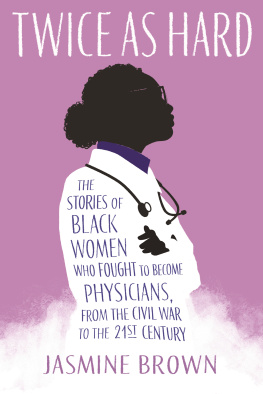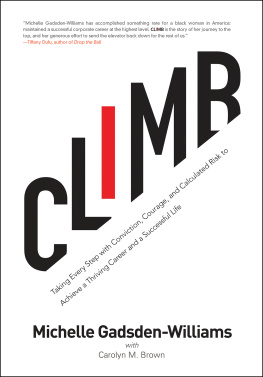

Irish-Australian lesbian Zohl d Ishtar is the author of Daughters of the Pacific (1994) and editor of Pacific Women Speak Out for Independence and Denuclearisation (1998), which has been translated into Japanese and German. She has worked with Indigenous Australian and Pacific women and their communities since 1979, and has visited 27 countries as a social justice advocate campaigning for the eradication of colonialism in all its forms. She was a peace activist at Greenham Common Womens Peace Camp in England from 1983 through 1988, from where she initiated the British network, Women for a Nuclear Free and Independent Pacific. In 1995 she sailed to Moruroa to protest French nuclear testing with the New Zealand Peace Flotilla. In 2005, Zohl was nominated for the Nobel Peace Prize as a part of the 1000 Women for Peace campaign. She was at the University of Queenslands Australian Centre for Peace and Conflict Studies first as a Post-Doctoral Fellow (2005 to 2007), and later as Honorary Research Fellow (20082010). Since 2012 she has been Kapululangus Executive Director. In 2016, she has now lived with the Elders for 17 years, and worked with them 24 years.
OTHER BOOKS BY ZOHL D ISHTAR
Daughters of the Pacific (1994)
Pacific Women Speak Out for Independence and Denuclearisation (1998)
Spinifex Press Pty Ltd
504 Queensberry Street
North Melbourne, Victoria 3051
Australia
http://www.spinifexpress.com.au
First published 2005
New edition 2016
Copyright Zohl d Ishtar
Copyright on layout, Spinifex Press, 2005, 2016
Copyright on photographs remains with the photographer
This book is copyright. Apart from any fair dealings for the purpose of private study, research, criticism or review, as permitted under the Copyright Act, this book may not be reproduced in whole or in part by any process, stored in or introduced into a retrieval system or transmitted, in any form or by any means (electronic, mechanical, photocopying, recording or otherwise), without prior written permission of the copyright owner and the above publisher of the book.
Copyright for educational purposes
Where copies of part or the whole book are made under part VB of the Copyright Act, the law requires the prescribed procedures be followed. For information, contact the Copyright Agency Limited.
Photos by Zohl d Ishtar
Photo collage by Tricia Hanlon
Maps by Karen Batten
Edited by Belinda Morris; new edition Pauline Hopkins
Indexed by Margaret Findlay
Cover design by Deb Snibson
Typeset by Claire Warren; new edition Blue Wren Books
Printed and bound by McPhersons Printing Group
National Library of Australia Cataloguing-in-Publication data:
D Ishtar, Zohl, 1953.
Holding Yawulyu : white culture and black womens law.
Bibliography.
Includes index.
ISBN 978 1 7421997 9 5.
1. Women, Aboriginal Australian Western Australia Great Sandy Desert Cross-cultural studies. 2. Women, Aboriginal Australian Western Australia Great Sandy Desert Social life and customs. I. Title.
305.4889915
Dedicated to the Daughters of the Red Desert.
Grow strong in Law.
I present this story with respect for and in honour of the Kapululangu Women Elders
My walytja (family)
This second edition is dedicated to Yintjurru Margaret Anjule Bumblebee Napurrula who, though living with diabetes and having her leg amputated in 2007, bravely remained an inspirational leader among the Elders until her untimely death on 8 September 2011. I am proud to call her Pimiri (aunty). (Her name has been used with family permission as a sign of respect for all she created.)
Recognition of a Massive Achievement.
Yintjurru Margaret Bumblebee Anjule Napurrula,
Elder of the Year 2008 for the East Kimberley
Aboriginal Achievement Awards.
Copyright 2008, Wunan Foundation.
Katimalkuya Yawulyu
kamu kulintjurratjiitjilu
makarrmanulkutjananya
They will hold onto their Womens Law and teach their children and make them strong.
Leaflet for culture tour by Manungka Manungka Womens Association, 1992 (Kapululangus predecessor organisation).
When the fullest breath of a peoples cultural voice is allowed to flourish, this engenders cultural energy so potent that it touches the hearts of its members and stirs in them a conviction in their own completeness which, both unconquerable and impregnable, can heal soul wounds and refashion worlds.
Zohl d Ishtar, Holding Yawulyu: White Culture and Black Womens Law, 1st edition, 2005, .
ACKNOWLEDGEMENTS
Yati Minyirri! Yipimarnkurrpa kamu Pimirikutjarra kamu Karparlikutjarra kamu Ngawitji. Many people must be acknowledged and thanked for their contribution in bringing this book to fruition, but I owe most to my walytja (family), the Kapululangu elders.* They shared their lives with me, and grew me up in their ways, teaching me to respect the Tjukurrpa, the Law. I honour and applaud you for your vision and your strength. Thank you for having patience with the limitations of my perceptions and understanding of your world and lifeways, and for inspiring me with your kurrunpa maya (spiritual strength). I hope that this book does you all justice. Yati (thank you) also to the pinta-pinta kamina (butterfly girl) for the yintjanu (gift) of your smile. Your laughter and your insistence on being wildly free have sustained and inspired me.
I thank all of the women, men and children of Wirrimanu, particularly my close-up kin, who taught me and looked after me while I was in your homelands. Thanks also to the Wirrimanu Aboriginal Council for their ongoing support throughout the time I lived in Wirrimanu. I remain gratefully respectful of the Nangala Kutjarra for the dream, and for insisting that I took responsibility for Yawulyu.
Nobody has worked harder to support this project than my sister Tricia Hanlon. She has believed in the Kapululangu elders vision since its inception and has been involved in the Kapululangu project since its beginning. Her visit to the Kapululangu Tjilimi in August 2000 (along with a second sister, Margaret Hanlon Dunn), enabled her to come to know the women elders and to gain an understanding into the socio-political situation in Wirrimanu. Her skill with proofreading has proven invaluable. I particularly thank her for her enthusiastic determination that the story be told, and her painstaking insistence upon excellence. Her extraordinary commitment to the women elders provided me with the sustenance needed to make it through to the end. More than anyone, she has shared this experience with me.
I express my gratitude to Renate Klein who has continued to believe in the project even in its most difficult times. I was fortunate to have her guidance and advice, illuminating suggestions and comments, and friendship and trust during the research stages, for these formed the rock upon which I was able to stand while navigating academia from my solitary sojourn in Wirrimanus red desert. Also to Susan Hawthorne of Spinifex Press who understood the importance of this book even before it was written, and without whose trust, foresight and skill this book would never have arrived in your hands.






